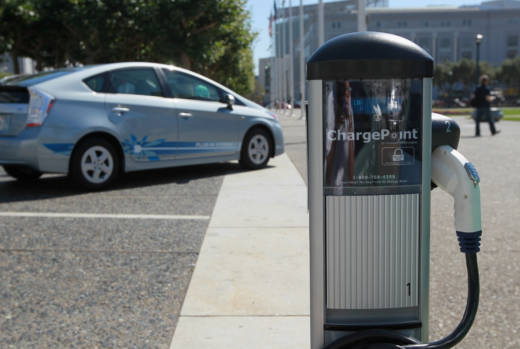“The California grid is well placed to handle rapid growth in PEVs but advance planning and smart policy can ease the transition for the state’s power system,” said the statement accompanying the report. Next 10 has been an advocate for putting more zero-emission vehicles on the road.
The report concludes that 3.9 million PEVs would suck up about 5 percent of the state’s current power needs, adding 15,500 gigawatt-hours to charging demand.
Illustrating this modest increase in energy demand, researchers say a Chevrolet Bolt electric car that drives 50 miles per day uses about the same amount of power as an air conditioner cooling a three-bedroom home for three hours.
The state’s shift toward cleaner transportation will require upgrades to the energy system, according to the report, but the benefits will outweigh the costs.
“If California wants to meet its zero-emission vehicle goals while keeping electricity affordable and reliable, it’s worth considering some policy levers that can help,” co-author Anand Gopal said in a statement.
Key measures the report recommends for a smoother transition include offering drivers off-peak charging incentives and “smart charging” programs, but the report notes potential barriers to these initiatives.
Smart charging is a method of regulating time and rate at which the vehicle is charged based on signals from the grid operator, allowing the car to stop charging at peak times.
Among the barriers to a smooth transition to getting so many PEVs on the road, the report cites drivers’ privacy concerns and energy storage programs that use electric vehicle batteries to feed energy back to the grid. Often touted as a solution to grid stress, the report debunks the notion as costly and complex.[contextly_sidebar id=”GwbepcA8Q7D5Usw5DyrX2rre5BNddFQZ
Stationary storage devices are a better solution, according to the report, because they’re more convenient to use than a “moving battery.”
In addition, advances in technology such as smart devices for thermostats and refrigerators, which promise to make energy distribution more efficient and cost effective, make EV batteries a less attractive option for supplying energy to the grid.
As more electric cars hit the road, meeting the increased energy demand might require moving away from investor-owned public utilities and toward smaller, community-based programs, according to Next 10 analysts.

